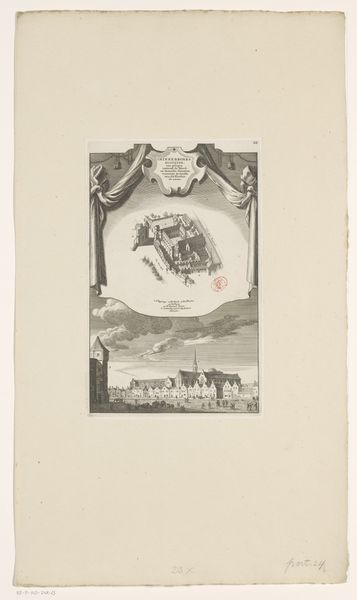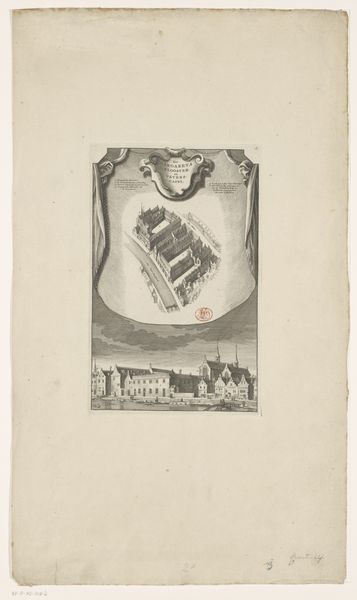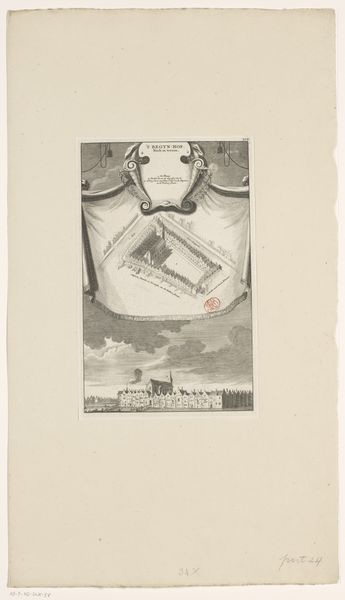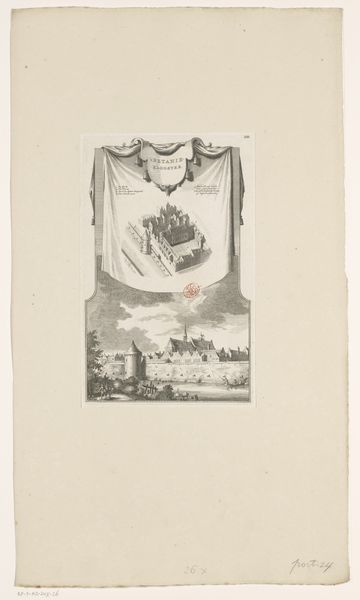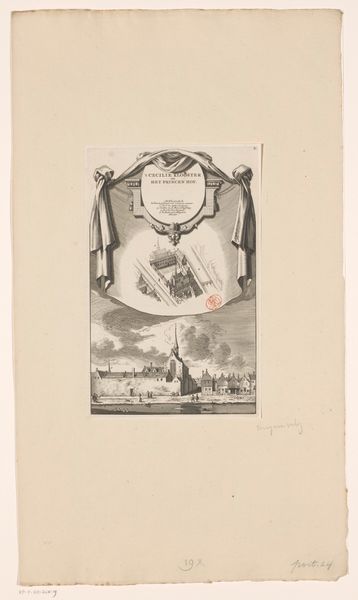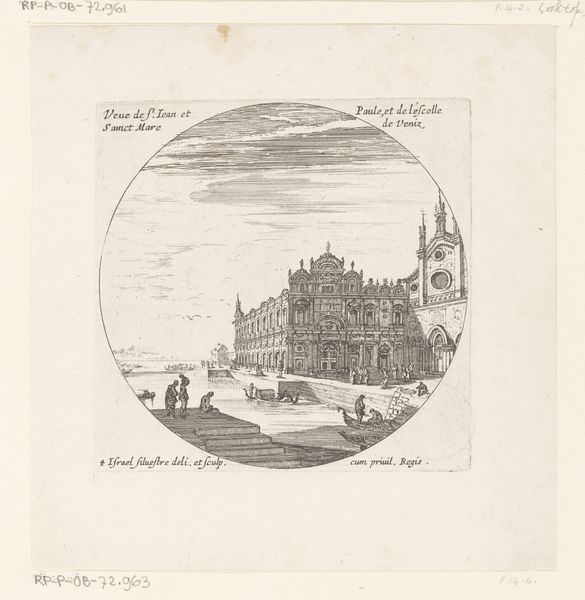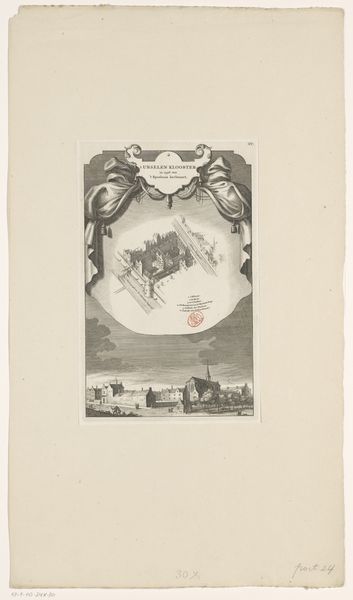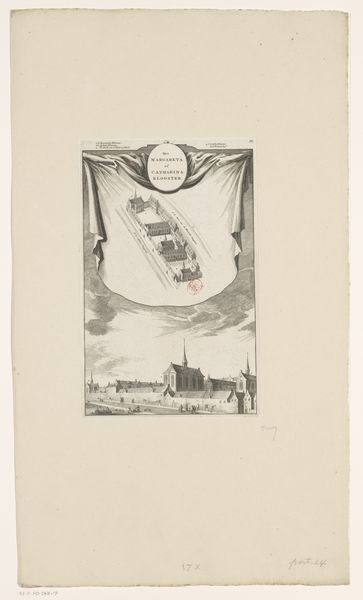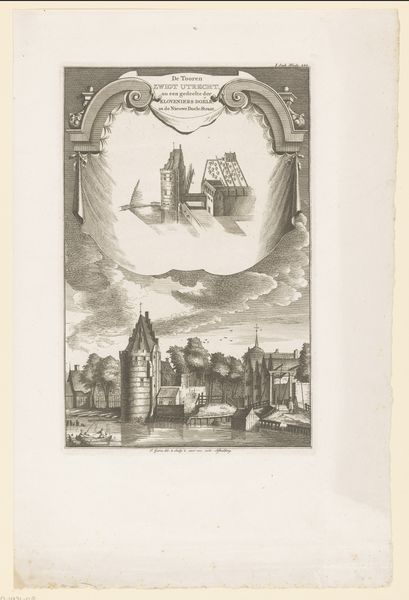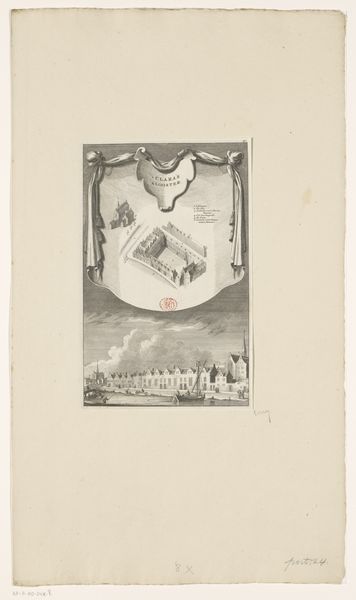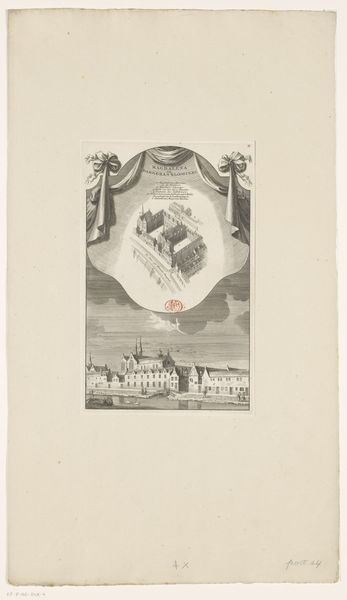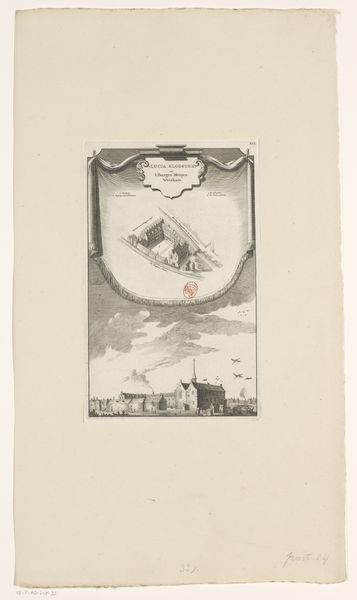
print, engraving
#
dutch-golden-age
# print
#
cityscape
#
engraving
Dimensions: height 276 mm, width 178 mm
Copyright: Rijks Museum: Open Domain
Editor: So, here we have "Het Nieuwe Nonnenklooster te Amsterdam, ca. 1544," an engraving created around 1760 by an anonymous artist, currently held at the Rijksmuseum. I'm struck by how it presents a bird's-eye view within what seems like a draped curtain. How do you interpret the function of an image like this? Curator: This print offers a fascinating glimpse into the intersection of urban planning and religious institutions within Amsterdam’s socio-political landscape. It's important to remember that in the Dutch Golden Age, cities like Amsterdam were centers of commerce *and* religious reform. These kinds of prints served less as 'art' and more as documentation, and sometimes even promotion of civic developments. What do you notice about the prominence given to the cloister within the overall cityscape? Editor: Well, even though it’s called the "New" Nunnery, the engraving almost makes it seem like it's a fortress or a strategically important landmark dominating the area. It feels as if it's intentionally given prominence. Curator: Precisely. These depictions were tools to project power. By showcasing these buildings, even religious ones, authorities solidified their image of control and order. Think about the potential viewers and where these prints would have been displayed - who was this imagery designed to impress? Editor: I suppose merchants and foreign dignitaries would be suitably impressed by Amsterdam's sophistication, showing that even religious places played a part in it. Also, maybe it offered a certain vision of order. Curator: Exactly. Furthermore, the “curtain” element you noted, it adds another layer. What is being unveiled or presented? Who controls this representation, and to what end? Editor: It frames the cloister as something valuable or worthy of display, maybe even legitimising it in a public sphere increasingly concerned with reformed ideals. I see how images, even seemingly straightforward ones, become intertwined with institutional and political power. Thanks for shedding some light! Curator: It goes to show, doesn't it, that even an engraving can be read as a document that shows social priorities and ideologies through the very act of visualizing urban space and its institutions.
Comments
No comments
Be the first to comment and join the conversation on the ultimate creative platform.
